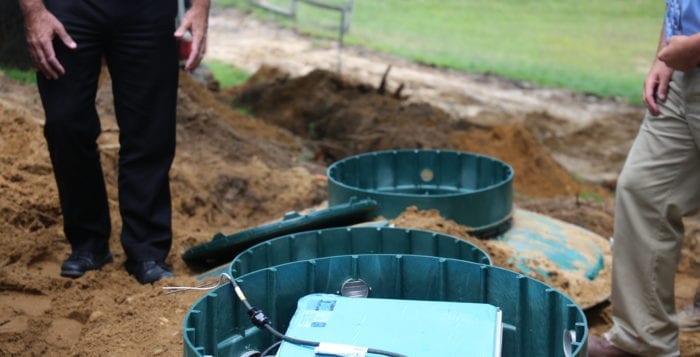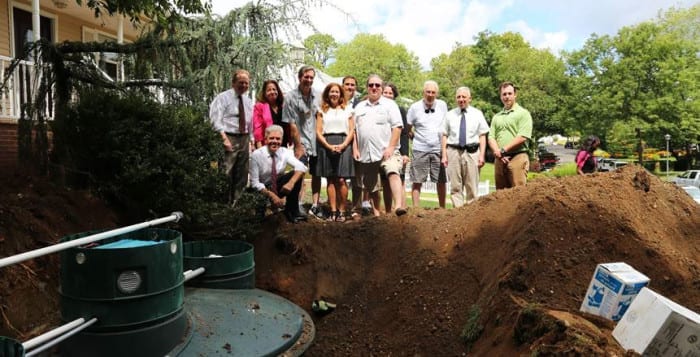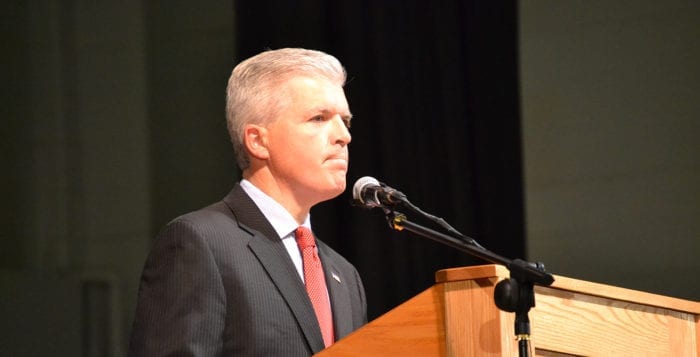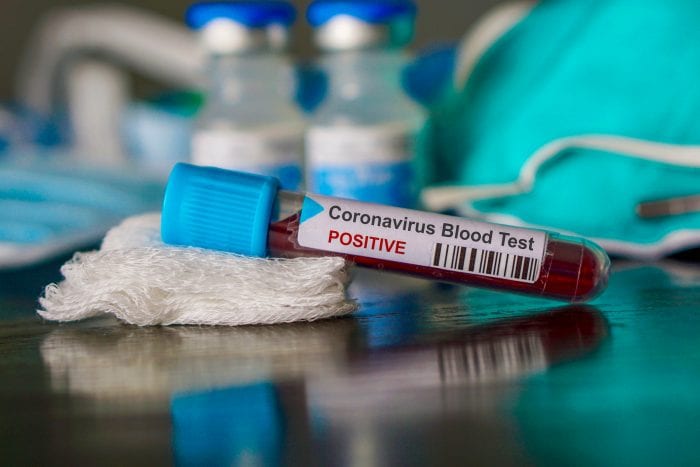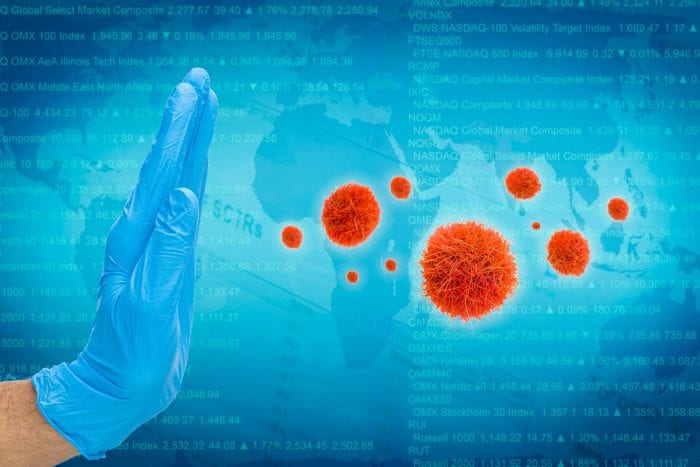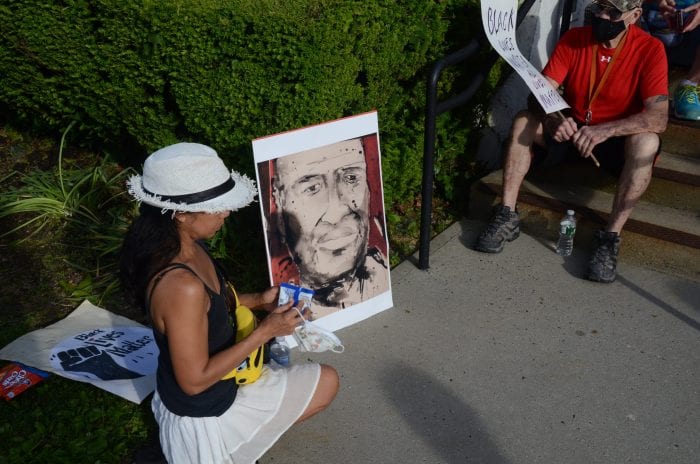With a June 23 date for the New York State primary fast approaching, TBR News Media hosted an online debate to hear directly from those Democrats running for the District 1 State Senate seat.
The position has been held for the past 40 years by Sen. Ken LaValle (R-Port Jefferson). At the beginning of the year, LaValle announced this year would be his last in the Senate.
Yet even before the venerable senator made his announcement, Democratic contenders were lining up for the seat. By late January, five Dems were in the race. Meanwhile, the Republicans have already settled on their front-runner, state Assemblyman Anthony Palumbo (R-New Suffolk).
Candidates 19-year-old activist Skyler Johnson, Southampton Town Councilman Tommy John Schiavoni, founder of Parents for Megan’s Law Laura Ahearn and Brookhaven Town Councilwoman Valerie Cartright (D-Port Jefferson Station) all responded to TBR’s requests for a debate. Nora Higgins, a Ridge resident and the regional coordinator of the Public Employees Federation, did not respond to multiple requests for her availability in the debate.
With the number of cases of COVID-19 in New York dropping, and with the reopening process happening, how would you like to see Long Island continue to reopen, while still putting in safeguards to prevent a resurgence?
Many candidates called the fact the state allowed big-box stores to stay open was unfair while small businesses were forced to close and lose out on several months of business.
Cartright said she and her fellow members of the town board have decried the state’s unequal practices of forcing small businesses to remain closed for months while stores like Walmart or Target stayed open. She touted the town’s small business reopening task force made up of local business leaders to look at this issue.
“As we move forward [in reopening], we find gaps, we find things that are not necessarily equitable,” Cartright said. “We have been on calls for the past four months each day talking about how we can best service our constituency — we cannot stop that process now.”
Johnson said the virus spread because of people not being able to call in sick for work or leave their jobs, especially if they might lose health insurance. He called for the passage of the New York Health Act, which would allow universal health coverage for residents.
“We need more places where business owners can reach out to, to keep themselves, their employees and their customers safe,” he said.
Ahearn said the state needs to ensure it’s not limiting small businesses, and called for further tax incentives beyond the federal stimulus money given to small shops to ensure they can continue.
“Small businesses are really struggling out there,” Ahearn said. “If Walmart is open, and people are buying tchotchke, why couldn’t they go to local stores and buy that tchotchke?”
Schiavoni, a former teacher for almost 30 years, also said New York needs to “unify” the health care systems, including hospitals and walk-in clinics, and said New York State will need to lobby the federal government for additional financial relief for local municipalities. With 34 school districts in Senate District 1, many could very well lose close to 20 percent of state aid, which means cuts that could be “absolutely staggering.”
“Which means we’re cutting jobs when we really shouldn’t,” he said.
With the ongoing protests, and with bills recently passed in the state Legislature with most already signed by the governor, what is your opinion of protester calls for reform, and what more should state and local governments do to bridge the divide of race relations on Long Island?
Johnson said he helped organize two separate protests, one in Port Jefferson Station and another in Stony Brook, which he said he was “very proud of.”
He called for more police reform than the bills passed in the Legislature. As a proponent of what is called “defunding the police,” he said it is more about taking money given to departments and investing it into communities. He also called for demilitarizing departments, citing Los Angeles police just recently having been forced to get rid of their grenade launchers.
“We need to be passing reforms on every level to reform police departments,” Johnson said. “We need to pass reforms that combat if a black and a white man are arrested, the black man will likely receive a harsher sentence.”
Schiavoni said that Suffolk has “great police officers who need to be lauded,” and those people need to be leaders to get rid of racist elements in the ranks.
“Those officers that shouldn’t be in the ranks, let’s face it, they kill people,” Schiavoni said.
He said the state needs to alter the way police are trained and led, and also enfranchise the people of the community to help police their own communities.
Cartright said the killing of George Floyd was just the inciting incident that “helped open the eyes of people to what’s been happening to black and brown people for centuries.”
When looking at the bills that passed the state Legislature, she cited that many of the bills had been on the docket for years “with no traction.” Before she became a councilwoman, she had been working as one of those looking to “push the needle” toward reform.
Cartright added that it’s on the state and people to make sure local governments are not circumventing this newly passed legislation, and that this is “just the beginning.”
Ahearn said as the person who runs Suffolk’s Crime Victims Center, she deals with local police on a day-to-day basis and sees the “overwhelming majority of our law enforcement officers are great cops,” including public safety and police, but the state “needs to weed out the bad ones, because they are literally killing people in our community.”
She said she supports the ongoing protests that will eventually lead to the end of structural racism not only in police but in health care, housing and much more.
She said the terminology of “defunding” police is wrong, but the state should restructure to allow for de-escalation training and community outreach.
Many young graduates may be looking at a job market similar to those graduating in 2008. What have we learned since then, and how do we make Long Island more affordable to help both young and old consider staying?
Ahearn said she is a strong proponent of transit-based housing, especially citing the county’s work on the Ronkonkoma Hub project, adding that a general need to make investments in infrastructure to help generate funds as both local governments and states have been severely impacted by the pandemic.
“Our young people, our millennials just can’t afford to live here because they don’t have the good, high-paying jobs that are going to give them the income they need,” Ahearn said.
Cartright said it will take the revitalization of communities to create “additional options for housing.” She said it’s difficult to convince people to step past the initial NIMBYism thought to consider affordable housing options in their communities. She cited her work with the Port Jefferson Station/Terryville hub study for an example of looking at transit-based development, and how it will require sewers before revitalization occurs.
The state, she said, should shift the system that allows young people to buy homes, especially since student loan debt is taken into account when applying for a mortgage, and add more incentives to incorporate affordable components in new developments.
Schiavoni cited his work with Southampton Town creating affordable housing complexes. He said it will require new rezoning laws to allow for mixed-use structures.
He also mentioned the five East End towns’ Community Preservation Fund, which creates a transfer of some money sales of new homes over $400,000 toward a pool of affordable housing funds.
“These are the kind of innovative ideas we need to employ to keep our people here,” he said.
Johnson said that, as someone who just recently graduated from Suffolk County Community College, very few young people who when they graduate say they will buy a house and remain on Long Island, but instead say they will leave.
“I’ve spoken to people in the district who have not only been here for years, but families have been for years, who are saying they need to leave Long Island as soon as possible,” he said.
He said his plan includes taking vacant or derelict homes that go through the demolition process in towns and instead remake and use them to house people. He said he would create a lottery system for these homes, where those would be responsible for certain costs based on their income.
Sen. LaValle has been a proponent of the electrification of the Long Island Rail Road. Where do you stand on electrification and how would you go forward with a plan for a study?


